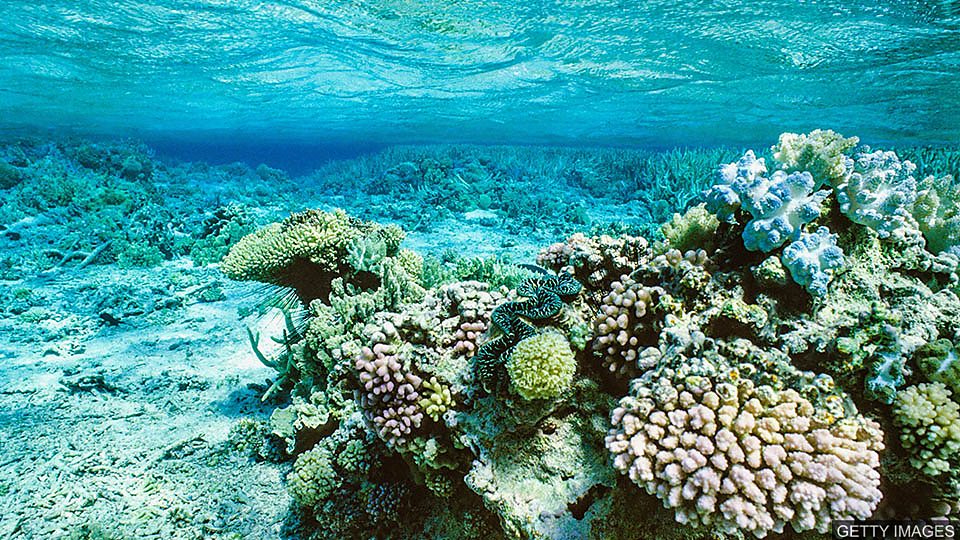一项研究发现,自 1995 年以来,由于气候变化导致海水变暖,澳大利亚大堡礁珊瑚数量下降了一半以上。
There is no time to lose. That’s the stark warning from Australian researchers about the health of the world’s largest reef system.
情况紧迫,时不我待。这是澳大利亚研究人员对世界上最大的珊瑚礁系统健康状况发出的严厉警告。
They say its coral has been under a sustained attack by warmer seas driven by climate change. This causes bleaching.
研究人员们说,由于气候变化导致的海水升温,大堡礁的珊瑚受到了持续攻击。这会导致珊瑚白化。
Under stress, the corals expel symbiotic algae which lives in their tissues and gives them their colour and energy.
面对环境压力,珊瑚会排出生活在其细胞组织中,并为其提供颜色和能量的共生藻。
The study asserts that this is compromising the Great Barrier Reef’s ability to recover.
这项研究坚称,这损害了大堡礁的恢复能力。
词汇表
stark warning 严厉警告
reef 礁
coral 珊瑚
sustained 持续的
bleaching 颜色淡化,白化
expel 排出
symbiotic 共生的,共同栖息的
algae 藻类,海藻
tissues (动植物的细胞)组织
compromising 损害,伤害
阅读理解:请在读完上文后,回答下列问题。
1. True or false? Climate change has played a role in the loss of the corals.
2. What did the Australian researchers warn of?
3. What happens to the corals when they are under stress?
4. Where in the corals does symbiotic algae live?
答案
1. True or false? Climate change has played a role in the loss of the corals.
True. The warmer seas driven by climate change attacked the corals continuously, which causes bleaching.
2. What did the Australian researchers warn of?
The Australian researchers warned of the health of the world’s largest reef system – the Great Barrier Reef.
3. What happens to the corals when they are under stress?
When the corals are under stress, they expel symbiotic algae.
4. Where in the corals does symbiotic algae live?
It lives in the corals’ tissues.


 3342次下载
点击下载
3342次下载
点击下载
 2621次下载 点击下载
2621次下载 点击下载
 4734次下载 点击下载
4734次下载 点击下载
 1854次下载 点击下载
1854次下载 点击下载
 1391次下载 点击下载
1391次下载 点击下载
 1391次下载 点击下载
1391次下载 点击下载











